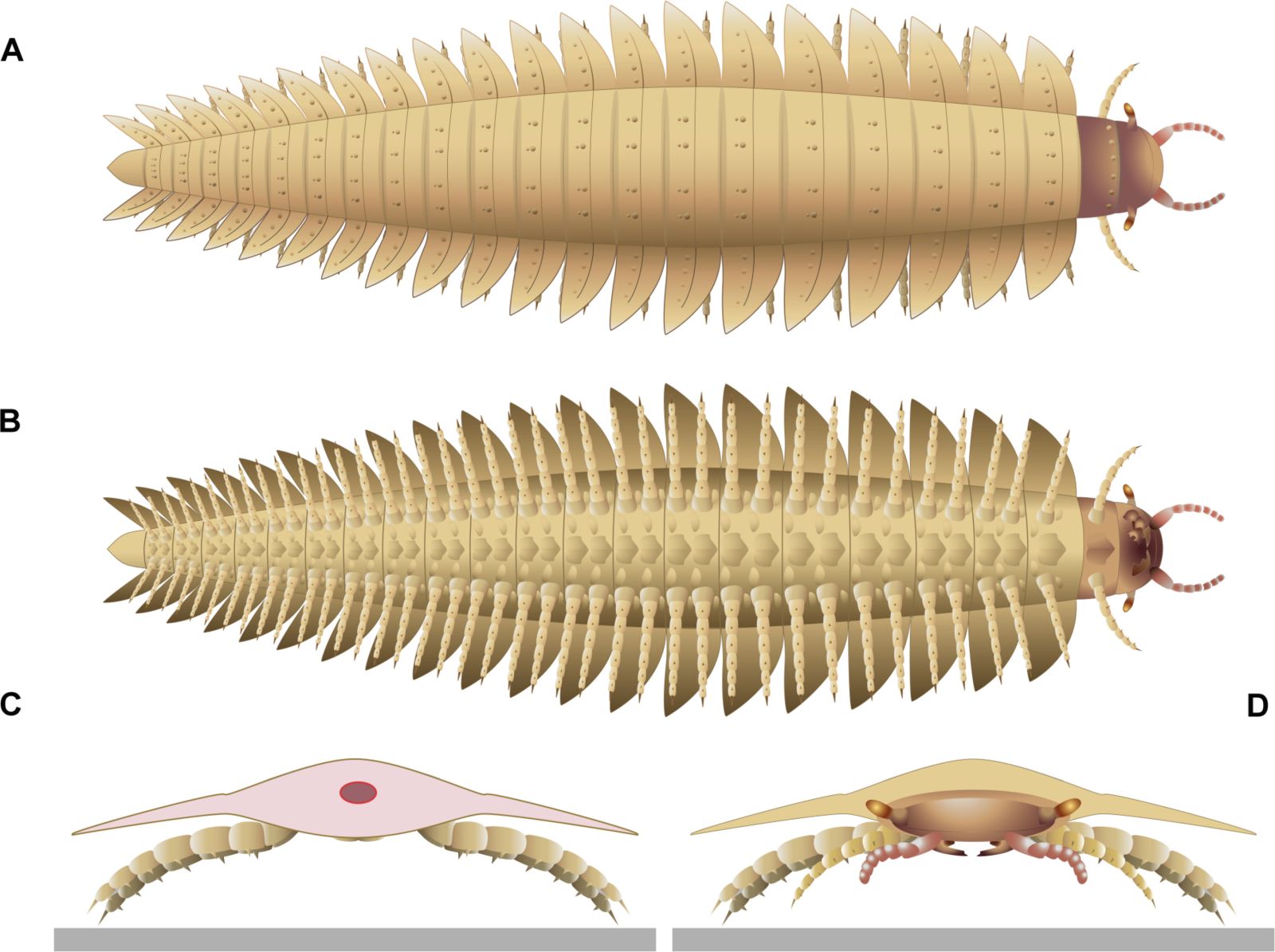The mystery of the 2.7-meter giant millipede finally revealed 🪲
Follow us on Google News (click on ☆)
For a long time, most of the fossils found were primarily headless exoskeletons, shed by these giants during molting. They would slide out of their shell through an opening near the head to continue growing. But recently discovered complete fossils from juvenile specimens have allowed scientists to accurately reconstruct the appearance of this animal.

This illustration, provided by researchers in October 2024, shows a reconstructed juvenile Arthropleura based on fossils discovered in Montceau-les-Mines, France.
(A) dorsal view.
(B) ventral view.
(C) rear view.
(D) frontal view.
The left maxilla has been removed in (B) to better illustrate the mandible below. The red circle in (C) marks the position of the digestive tract.
Credit: Mickaël Lhéritier, Jean Vannier, Alexandra Giupponi
This gigantic creature, called Arthropleura, belonged to the class of arthropods, which also includes insects, spiders, and crabs. Unlike its smaller modern-day relatives, this species reached impressive dimensions. Paleobiologist Mickaël Lhéritier from the Claude Bernard University Lyon described the discovery as surprising, as Arthropleura possessed a millipede-like body with a head reminiscent of centipedes.
The recently analyzed juvenile specimens measured about 2.3 inches (6 cm) in length, far from the dimensions of their adult counterparts, which could reach 9 feet (2.7 meters) and weigh over 110 pounds (50 kg). Nevertheless, they share enough characteristics to provide valuable insight into the appearance of the adults.
Researchers used computed tomography (CT) scanning techniques to observe these fossils without damaging them. This technology allowed them to see hidden details within the rock, such as fragments of the head. According to James Lamsdell, a paleobiologist at West Virginia University, this method is essential for preserving the integrity of fragile fossils.
Through these scans, they discovered that the Arthropleura's head featured short bell-shaped antennae, prominent eyes similar to those of crabs, and a small mouth adapted to a vegetarian diet. This reconstruction reveals elements about the biology of these colossal creatures that once ruled prehistoric forests.
However, the debate continues as to whether Arthropleura was the largest arthropod to have ever existed. Some scientists believe that the extinct giant sea scorpion could also lay claim to this title.
Arthropleura: awe-inspiring creatures
Arthropleura is a genus of prehistoric arthropod related to modern millipedes and centipedes. It lived approximately 300 million years ago, during the Carboniferous period. With a length of up to 9 feet (2.7 meters), it was one of the largest land-dwelling arthropods ever discovered.
The gigantic size of these creatures can be explained by the much higher atmospheric oxygen levels at the time. This increased oxygen concentration allowed arthropods, which breathe by diffusion, to grow to impressive sizes.
Arthropleura had a primarily herbivorous diet. Its small and adapted mouth allowed it to grind leaves and bark. Its size and digestive capacity made it a key inhabitant of Carboniferous forests.
Complete Arthropleura fossils are rare, as many of these creatures left behind empty exoskeletons after molting. These fragments generally do not contain the head, making reconstruction challenging.